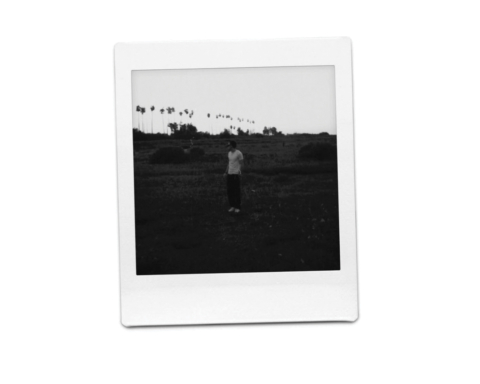By Joshua Svetz
Contributing Writer
You wake up. It’s dark and cloudy. You don’t feel like you did yesterday. Maybe you weren’t happy, but the day hasn’t started yet and already you want to climb in your bed and never get up. You walk to the bathroom. Suddenly you feel sick. You start dry-heaving in the toilet but nothing comes out. It would be better to puke, but you can’t. Now you’re late to class. It feels like the day is ruined. Your friends try to talk to you. They don’t understand what’s wrong. You lash out at the smallest things and can’t handle their jokes. Finally the day’s done. That was horrible, it’s time for bed. But you can’t sleep. You have no energy, but still it takes you hours to sleep, even melatonin won’t help. Welcome to the world of someone with seasonal affective disorder.
The “Winter Blues” should be treated much more seriously than just a passing cliché.
According to Mental Health America, seasonal affective disorder, or SAD, affects over 5 percent of the population, especially in the winter. With the temperature beginning to drop and the days getting shorter, SAD is coming in full force. People already plagued by depression can plunge to even lower points once SAD sets in. People that normally don’t feel depressed can slump to a moderate depression in an instant. The signs of SAD vary, but according to Mental Health America, symptoms are consistent with regular signs of depression. Symptoms include anxiety, mood swings, nausea, social anxiety, lethargy and lack of sleep.
For me there are times when I wake up depressed for no reason. I’m regularly nauseous in the morning and a bit irritable. If problems happen in my life they get blown up much more due to SAD. But as I’ve grown up I’ve learned how to cope with it.
Yes, I will always risk a drop into a massive depression at a moment’s notice, but the key to getting out of the fog is routine and recognizing when your mind starts to slip. SAD actually doesn’t usually come until you’re 20, but I’ve had it my whole life. For several students at Saint Bonaventure University, especially if you’re from a warm area, SAD can sneak up on you. With that, here are a few tips I used and how someone not afflicted by SAD can help their friends and identify.
Get up
The toughest thing to do when depressed and it looks horrible outside is get up. Staying in bed under the covers is the worst thing for you to do. It lets you sulk in misery and the brain generates depressing thoughts. You have to stay active or hang out with friends. If you can’t hang out with friends, take baby steps. First, get up. Then, shower. Then, eat. Then, see how you feel. If you still can’t bring yourself to be around others, that’s ok. At least you got up and tried. As an alternative, don’t Netflix binge when you’re depressed. Instead, accomplish something. It could be an assignment, passion project or a simple hobby. Do something to not waste your day. Knowing you were productive will help you when you try again tomorrow.
Gym
Yes it sucks to trudge through the snow and, motivation to work out tends to drop with weather. But, as Nike says — “just do it.” Whether you like heavy-lifting, playing basketball or running, just getting up and going to the gym releases endorphins and increases serotonin. That’s the juice in your brain that causes euphoria and confidence. Plus, it’s easy to get out of shape in the winter. If you check the mirror and you look good, you’ll feel good.
Light Therapy
Some people swear light therapy helps them overcome SAD. Just order a big bright light and expose yourself to it for about 30 minutes. Honestly, it has worked miracles.
Reward Yourself
Before I learned to manage my depression I used to write down five goals for my day. If I completed the goals, I would reward myself in some capacity. I found it kept me on track and eventually I didn’t need the goal sheets. But, when you feel alone and down, any little motivation helps pick you up. Go slow at first. You might not reach all your goals every day and that’s ok. Above all though, stick with it. Knowing there’s a light at the end of the tunnel will help you fight through the darkness.
Punching Bag
Exercise is great, but sometimes you want to just release the stress of the day. Working the bag can help you get it all out. Man or woman, go slow at first to develop a semblance of technique. Then, once you feel ready — go to town. People may look at you weird in the gym, but once they see how hard you hit the bag, they won’t mess with you.
Talk to Someone
Whether it’s just a close friend, family member or therapist, talking to someone about your sadness or anger will help calm you down. Venting all your problems and hearing them out loud can help you frame your thoughts and work towards a solution. I’m not saying bother your friends with every single problem, but if you need someone to talk to ask them. More than likely, they’ll listen if they care about you.
Journal
Journaling all your thoughts and keeping track of patterns in your behavior not only increases self-awareness, but it helps you release your feelings. Writing about every little thing that happened during the day or all the thoughts swimming in your head will help you release.
Meditate
Obviously it’s too cold to go outside, but with the right Spotify playlist and an understanding to keep it quiet between your roommates, you can feel at peace. Fifteen minutes a day leave all the craziness of the world behind and will help you just relax. Have some herbal tea after; maybe take a warm shower. You could even meditate in the shower if you wanted. There are no rules, so just relax.
Not all of these tips will work. Some people react differently to different stimuli. However, giving them a try can’t hurt anything and maybe you’ll find your way out of the fog.
If you aren’t afflicted with SAD, you most likely have friends that are. The number one key to helping them is patience. Your friend may or may not tell you if they have SAD or any form of depression, but if you see them down, comfort them.
With my closest friends and roommates, I tell them up front when SAD hits me. It genuinely does affect how you handle the everyday stresses of life. Being patient and understanding will increase trust with them. If you increase trust with someone going through something, they’ll be more inclined to tell you when something’s wrong. Don’t get overly mad at them. Stay calm if they mess up. Many people afflicted with SAD probably don’t know and some may never have had any mental health treatment.
Recognizing the signs of SAD and knowing how to treat and deal with people afflicted is important this time of year. Be kind; you never know the battle someone’s going through.
svetzjr14@bonaventure.edu






